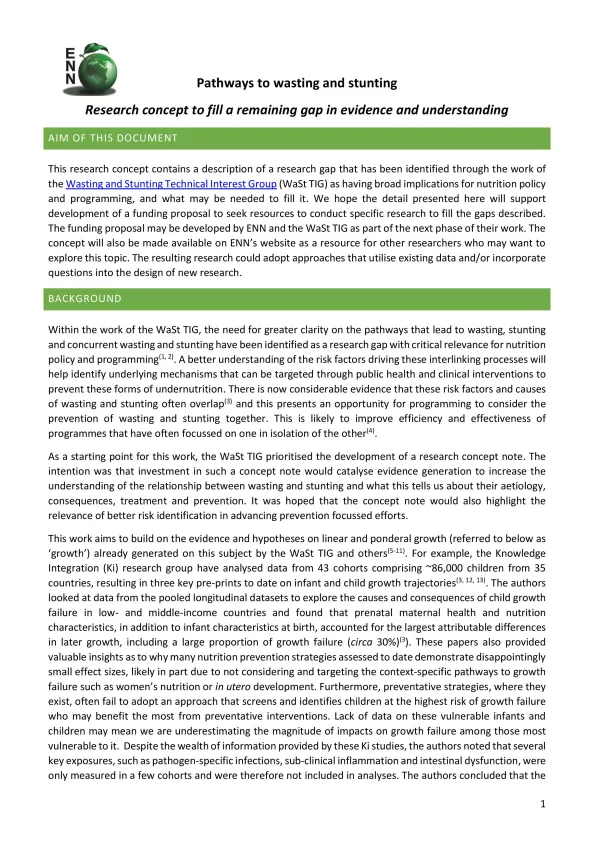Pathways to wasting and stunting: Research concept to fill a remaining gap in evidence and understanding
Publication details
Within the work of the Wasting and Stunting Technical Interest Group (WaSt TIG), the need for greater clarity on the pathways that lead to wasting, stunting and concurrent wasting and stunting have been identified as a research gap with critical relevance for nutrition policy and programming. This research concept describes the research gap and what may be needed to fill it. We hope the detail presented here will support development of a funding proposal to seek resources to conduct specific research to fill the gaps described. We are actively looking for collaborators and donors - the resulting funding proposal may be co-developed by ENN and the WaSt TIG, with relevant collaborators, as part of the next phase of the WaST TIG’s work.
Overall research aim: to catalyse evidence generation to increase the understanding of the relationship between wasting and stunting and what this tells us about their aetiology, consequences, treatment and prevention. Ultimately we hope this research will highlight the relevance of better risk identification in advancing prevention focussed efforts.
We highlight two pathways of interest which could be important for improving the effectiveness of programming that aims to address undernutrition and for which there are currently considerable knowledge gaps. These pathways include:
- The association between a child’s inflammatory, metabolic, and/or microbiome profile and his/ her growth trajectory
- Maternal determinants as drivers of infant and child growth trajectories
We encourage prospective collaborators to consider two main approaches for this research:
- Conduct further analyses of existing cohort data. This may include applying for funds for a dedicated researcher to further analyse existing cohort data, where relevant data already exists but has not been interrogated
- Explore these research questions in a new cohort.
Please read the full research concept to see if you are interested in exploring this topic further and would like to discuss a potential collaboration with ENN. We look forward to hearing from you.
